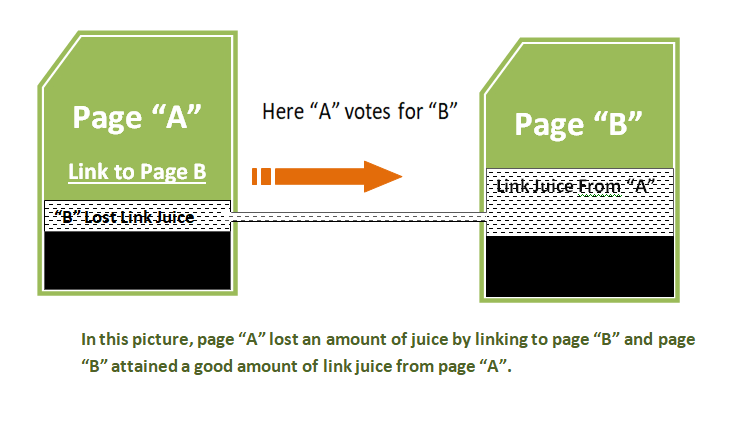
Internal Link: How to Create and SEO Best Practices
Link is the main element for web creation and the internal link is an on-page element of a website.
An internal link is just a link to connect two pages of the same website where anchor text or images are clicked to jump to the target page.
This link is an important factor to both search engines and users.
Search Engines follow links to reach the content to understand what the content is. If the bots of search engines get a proper link structure to discover the contents, they will crawl and index the content soon.
Similarly, a user also needs a proper link structure to navigate that helps to find out the content easily on a site.
Again if the link structure is clearly accessible to the users, it will definitely be acceptable to the search engine to discover the content for crawling, indexing, and lastly ranking.
Thus, by creating internal links on your website, you can help your site rank higher in search engine results pages (SERPs). So, this internal link needs to be well-optimized to boost SEO.
Table of Contents
Types of Internal link
There are four main types of internal links:
1. Links from home page
2. Navigational internal link
3. Links from your main content pages
4. Links from your sidebar or footer (or any other pages that are relevant to your topic)
1. Links from your home page
Home page is an introductory page. It is a landing page that attracts the visitors first and gains more views and links compared to the site’s other pages. So, the internal links from the home page carry more link juice to the target link pages.
2. Navigational internal link
This internal link is created on the navigational bar that facilitates the visitors to move from page to page.
3. Links from your main content pages
Links from main content pages are referred to as contextual internal links. The users always prefer to click on this type of link. So, by placing them properly on the content body, it is possible to bring great SEO value for ranking specific keywords on your website.
4. Links from the sidebar, footer (or any other pages that are relevant to your topic)
Generally, these internal links often miss the attention of the viewers and gain fewer clicks. But, these links are shown on each page of your site.
Anchor text in internal Link
Anchor text is text that is hyperlinked to a web page or article. It links one webpage to other web page.
It plays a role in both the users and search engines. If the anchor text of an internal link becomes useful to the users, it will certainly be helpful to Google and other search engines to find the relevant content page that will boost SEO.
So, anchor text is one of the most important ranking factors for internal links.
One of the most important things to remember when writing anchor text is to make sure that the text you use is relevant to your blog post. This means that you should use text that is relevant to your topic and your audience.
You also need to make sure that the text you use is keyword rich but not keyword-stuffing.
This means that you should include words and phrases that are related to your topic. Including these keywords in your anchor text will help to increase your blog’s ranking on search engines.
Internal Link: How to Create and SEO Best Practices
Internal Link Practice for SEO
Internal links are an important part of SEO. It is important for both indexing and ranking your keywords.
When a webmaster creates a link on their website, they are telling the search engine that their website is relevant to the topic of the link.
The search engine then uses this information to crawl and index the webpage. Indexing is the first step in making the website searchable and ranking.
Ranking is the process of determining the order in which a website appears on a search engine result page.
When visitors click on an internal link, they are likely to visit your page again, which can lead to more sales or lead higher rankings in future search engine results pages.
Thus internal links can help you generate more traffic to your site which leads to ranking high.
So, we can say internal links are the bread and butter of any SEO campaign. It requires to be well-optimized for search engines.
Anchor text of the internal link is also important to boost SEO. So, creating good internal links is an essential part of any SEO campaign.
How Internal Links Spread the Strength
When internal link of a page connects to another page of the same website, it passes the link value to the target pages.
If multiple pages are linked with the home page of a website, the link value will pass equally to all the target pages.
In this case, home page lost a big amount of link value.

How to Create a Good Internal Link
Creating good internal links is a pre-requirement of crawling, indexing, and ranking your content by search engines. There are a few things you can do to help make your links better.
When creating internal links, it is important to consider the following:
1. The target audience for the link.
A specific group of people who are most likely to buy your product or service is generally known as the targeting audience A link should be inserted for attracting your target audience and it will probably increase your sales and revenue.
2. The context of the link
It refers to the relationship between the links on the web and how those links relate to the context of the content. Depending on this relationship Google pass link value through the link to the destination. That is why these links are called contextual internal links
3. The link’s destination.
The href attribute indicates the link’s destination. By clicking on the link text, the readers are sent to the link destination.
4. The link’s importance.
Internal link helps Google understand and follow the descriptive anchor text and find out which pages are important and what they are about.
5. The link’s relevance.
Link relevancy refers to how similar or related the content of a page with the content of another page. Link relevance criteria are a factor in SEO.
6. The link’s usability.
Here link’s usability is a score that indicates the use of the link to achieve a defined goal effectively, efficiently, and satisfactorily.
7. The link’s authority.
Link authority indicates the ranking power of a link. The authority of the link determines the position of content in SERP under a keyword. The higher the authority of a link is the better the power to rank.
8. The link’s speed.
The speed of a link is one of the most important factors affecting its ranking. If a link is slow, it will likely be ranked lower than links from more reputable websites.
There are a number of factors that can affect the speed of a link. The size of the file, the distance between the two sites, and the type of connection are all factors that can affect the speed of a link.
9. The link’s search engineability
Search engineability is one of the most important factors for a link to be successful. The more a link is friendly to search engines the more it will be powerful.
10. The link’s formatting
The link’s formatting refers to the formation structure of a link. It has two basic parts. One is the address (URL) of the webpage and the other is the link text. Both are significant in forming a successful link.
Conclusion
Links are the life of the web (WWW) and internal links are the life of a website.
Without them, the web does not exist and a website does not work. There is no use of Search Engines.
So, internal link building is one of the most important aspects of website and SEO. By creating trustworthy and high-quality links, you can help your website rank higher in search engine results pages (SERPs).
Internal Link: How to Create and SEO Best Practices
Related Term :
Best 5 Link-Building Strategies
